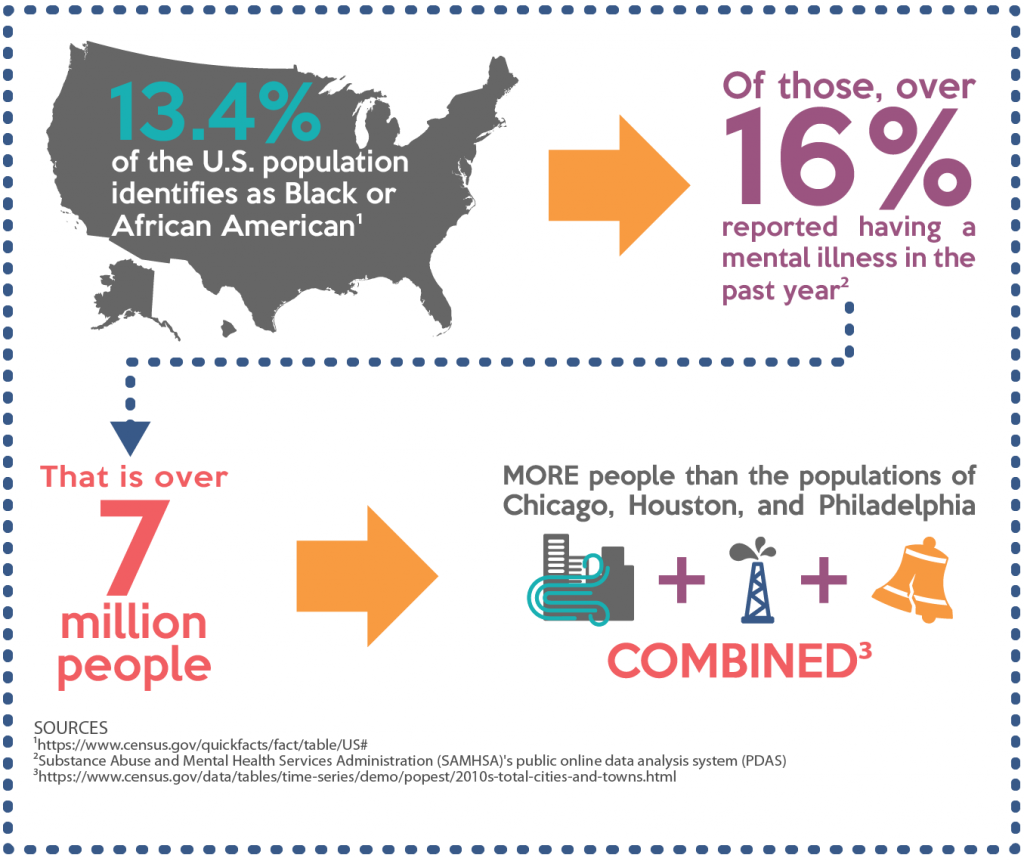A significant implication emerges from research on ethnic inequalities across mental health. African Americans (or Blacks) have higher amounts of morbidity and death than whites on nearly any physical wellbeing measure, but Blacks have lower rates of frequently occurring behavior, distress, and mental issues than whites. African Americans show lower levels of psychological well-being (such as life satisfaction and happiness) and, more frequently than not, higher rates of psychological depression when compared to whites).

Source: https://www.mhanational.org/issues/black-and-african-american-communities-and-mental-health
African Americans vs. Mental Health
Many African Americans, particularly the most marginalized, suffer from mental health issues, according to Lonnie R. Snowden, and will profit from early access to affordable means of treatment. These urges to seek support could be a result of coping patterns and discrimination, as well as a shortage of resources and recovery options.
The African American population is large—roughly 12.5 percent of the total population of the United States, except a significant count. For several years, intermittent incarceration in psychiatric institutions was a common African American experience of mental disorder and recovery. Many African Americans are receiving mental health services than ever before, and the imbalance in black and white implementation seems to have narrowed.
Findings
According to research on ethnic inequalities in outcomes, rural African Americans are more likely than their white peers to suffer from a higher incidence of psychiatric illness-related disabilities, including a higher likelihood of hospitalization and decline of occupational and social functioning. These findings indicate that, as opposed to their Caucasian peers, rural African Americans may face more stress and be at a higher risk of mental illness.
There are a variety of cultural obstacles to adequate and reliable mental health treatment for poor African Americans, including a shortage of insurance, less affordable providers, substandard services, and longer travel times. Cultural biases, such as distrust and avoidance of medication, may just be as disruptive, putting rural African Americans at risk of severe physical dysfunction due to unmet psychological needs.
Goal
To ensure that the creative process promotes communication and makes us more aware of mental illness. After the event, museums should talk to artists about how their works make work influences their identities and replaces assumptions of weakness or depression with healthy self-esteem.
Sociocultural Objects
Kirsty LaToya, The Face Behind Depression 
A young woman (perhaps a Latoya selfie) seems pleased with a large smile in “The Face Behind Depression.” Yet the title “Depressed” obscures her eyes. One reading is that while all are pleased, they have different genuine feelings (Johanson, 2020). As an example of mental health art therapy, this sociocultural piece renders depression more significant for young people, who must provide the ideal social media depiction.
 Design Museum
Design Museum
This quilt contains the Black Lives Matter emblem and the raised fist symbol. The quilt was auctioned off to raise money for a black activism organization, which was doing good works for other Black political candidates in St. Louis (SSAHE, 2020). An activist piece created, by Shelley Hoffman.
Resources
Mental Health America National
https://www.mhanational.org/issues/black-and-african-american-communities-and-mental-health
https://acssmigration.wordpress.com/2020/06/16/statement-of-solidarity-with-the-blm-and-anti-racist-movements-by-ssahe-social-scientists-against-the-hostile-environment/
